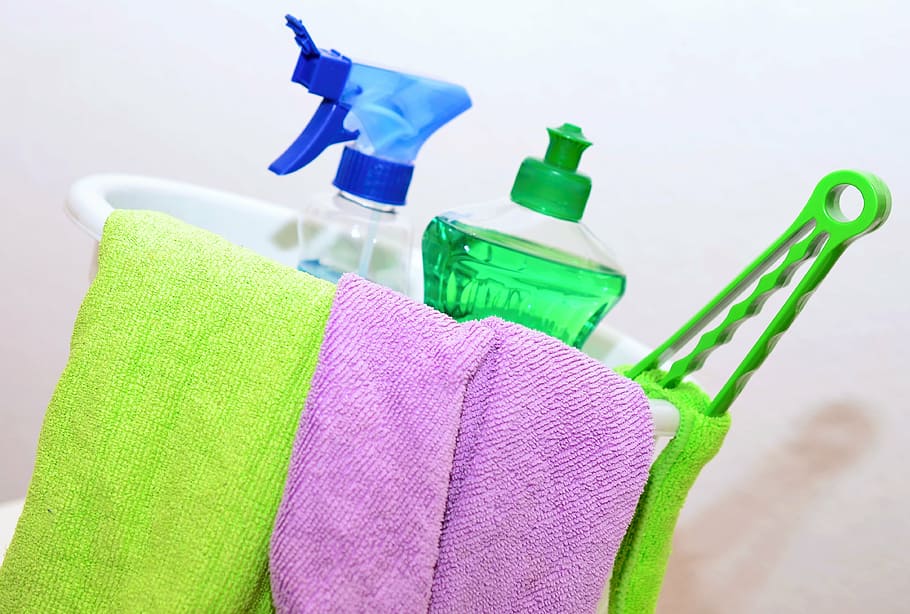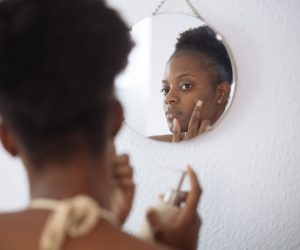
Tips from a Microbiologist on Keeping the House Clean During COVID-19
University of Nevada, Las Vegas (UNLV) via Newswise – UNLV microbiologist Brian Hedlund on the science of germs, where they like to lurk, and how to effectively get rid of them.
The barrage of coronavirus-related news stories can be dizzying. Even for the seemingly well-informed, it’s become increasingly difficult to sift through it all to discern truly helpful tips to keep our homes and families safe and to regain a little bit of control in our lives.
Take cleaning, for example. Just as we’re getting the social distancing thing down by staying safe at home, we’re beginning to take a long, hard look at our house cleaning habits. After all, the kitchen has suddenly transformed from a place to (occasionally) cook a meal into the family restaurant, workspace, and school – sometimes all at the same time.
So what do we need to know about the germs lurking where we live, and how do we keep them at bay?
Brian Hedlund is a UNLV microbiologist who studies how tiny organisms thrive in harsh environments. He’s also well-versed in the science of germs: how they work, where they like to hang out, and, importantly for us, how to effectively get rid of them.
We caught up with Hedlund, who shared some background on SARS-CoV-2, the virus that causes COVID-19, and a few simple recommendations on how we can all do our part to keep our living spaces clean.
COVID-19 has forced us all to take a closer look at what we touch and how we clean. How do germs “work” and how does COVID-19 stack up?
There are roughly 1,000 bacteria per square centimeter of human skin, and several orders of magnitude more on certain areas of the body like the armpits and the groin area. These microbes are released into the environment as skin sheds or as we physically touch our surroundings.
More importantly for SARS-CoV-2, the virus that causes COVID-19, microbes are also released in aerosols from sneezing and coughing or from mucous secretions. Whether we are careful or not, we are constantly picking up microorganisms from the external environment.
Once they are deposited onto a surface, the survival of microorganisms, including bacteria and viruses, is highly dependent on the biology of the organisms and the physical and chemical environment they find themselves in. Many human-associated bacteria are free-living and can survive or even grow separately from humans. However, others are entirely host-dependent and must be transferred to a new host in order to grow, as is the case for SARS-CoV-2. The data are still coming in about how long SARS-CoV-2 can survive outside of a human host, but the best evidence suggests at least a few days.
Are certain surface types more susceptible to piling up potentially harmful germs?
It’s important to look first at high-touch surfaces and how many people are in contact with those surfaces – think of tables and counters, doorknobs and handles, phones, remotes, keyboards, steering wheels, and light switches. The number of high-touch surfaces is greater than people tend to think it is.
That said, the physical and chemical conditions of the surface are important as well. Microbes, including SARS-CoV-2, can adhere more securely and generally survive better on textured surfaces where they can be protected by dirt, oils, and other materials. Some of that material can also provide nourishment for growth of some bacteria. Most heavy metals have antimicrobial properties, but other metals, such as iron, can provide energy for microorganisms and can lead to the proliferation and survival of certain bacteria.
Water is necessary for microbial activity and growth, so moist places are particularly conducive to microorganisms. Generally, dark or shaded surfaces are better for microbial growth and survival than those receiving direct sunlight since UV light is damaging to DNA and other macromolecules.
Any advice on how often people should clean high-touch and other surfaces?
Coronaviruses are surrounded by a lipid membrane and have a single-stranded RNA genome. This is important because the lipid membrane is very sensitive to soap and the RNA genome is very sensitive to UV light. In general, these are very sensitive microorganisms that don’t survive a long time without a host.
People should generally be most concerned with surfaces that receive public contact and/or those that are conducive to microbial growth. If you are in public and touch surfaces that people might have sneezed or coughed on, or even just touched, then it would be a good idea to disinfect anything you touch after that, including cell phones, keys, glasses, and anything you touch frequently because they could serve as intermediates for transfer to your own respiratory mucosa. This is especially important during the current pandemic or for people who are immunocompromised or otherwise prone to respiratory infections.
We now spend all of our time at home. Does staying home affect what and how often we need to clean?
Absolutely! If you’re home alone or with a limited number of people, then the risks are obviously reduced. However, SARS-CoV-2 infections are often asymptomatic and/or have long incubation periods, and this virus is very infectious. So, extra caution is warranted even in ideal situations.
I’m generally not as concerned about microorganisms in our own private spaces. Sure, we can all reduce microbial burden of high-touch areas, but the vast majority of microorganisms within our own private spaces are safe, as long as we’re in good health and pay attention to any problems with our our natural defense systems – skin, mucosal membranes, eyes, etc. It’s very important not to neglect problems with skin and mucosal surfaces and to make sure you’re in good overall health by eating and sleeping well and managing mental health and stress.
Of much greater concern, especially now, is limiting the transmission of microbes from other people. We all need to carefully think about the surfaces that could possibly transmit microorganisms from public spaces, and be sure to take the proper precautions when we get home.
I know people hear this everywhere, but it’s very important to observe social distancing and practice good hand-face hygiene at this time. If you’re in public (e.g. grocery store) and practicing social distancing, then your hands and anything that your hands touch become critical. So, think about what you touch with your hands. Your steering wheel, car keys, cell phone, door knobs, etc. These are the surfaces we all need to be aware of
Should we be concerned about germs on our mail or other packages delivered to our homes?
While I don’t think this is a major route of infection, we generally don’t know the provenance of packages that arrive in the mail, and we’re still working to better understand SARS-CoV-2. Because of this, it wouldn’t be a bad idea to treat packages with some caution.
The outside packaging could certainly have come into contact with microorganisms, and I’d advise at minimum washing your hands after opening a package and to treat the packaging itself with care by wiping down the package or the surfaces it comes in contact with. Since we don’t think SARS-CoV-2 survives very long away from a host, the internal contents are probably generally safe, but again hand washing is always a good idea for high-risk individuals.
Even at home, hand washing is important. Does the type of soap matter?
Soap works by dissolving lipid membranes that surround coronaviruses and many other microorganisms. What’s most important right now is to be aware of what you’re touching – particularly outside your home – and to wash your hands with any soap available before touching your face.
Temperature is also important. Warmer water disperses soap better than colder water, which makes it more effective. It’s also important to scrub your hands carefully. You now know the drill about singing “Happy Birthday” or “I Will Survive” for a fun way to ensure you’re washing long enough.
Beyond that, soaps that are most effective at dissolving grease would likely be most effective at killing coronaviruses. These are typically ionic detergents. That means that they have a salt listed in the ingredients – typically sodium or potassium. Some mild soaps might not be ionic, and I think they would be less effective.
There’s also a necessary balance between washing too much and washing too little, and using harsh detergents or weaker detergents containing moisturizers. Washing too often with harsh detergents that don’t contain moisturizers can dehydrate the skin and increase chances of skin infections. Alcohol is a strong disinfectant, for example, but be careful because it can dehydrate skin.
For those who have to venture out at this time, what’s your advice to steer clear of harmful germs?
An important thing to remember with many pathogenic, or disease-causing microorganisms is that they need to be delivered to the correct locations in order to cause disease. For SARS-CoV-2, this is the respiratory mucosa, although it is also thought that this and other viruses can proliferate in other locations, such as the eye, and then transfer to the respiratory mucosa. For this and other respiratory pathogens like influenza, avoiding airborne droplets, either directly or indirectly, is critical. For now, we need to practice social distancing, always practice good hand-face hygiene, and, for the health of others, cough and sneeze into your elbow.
To read the original article click here.






